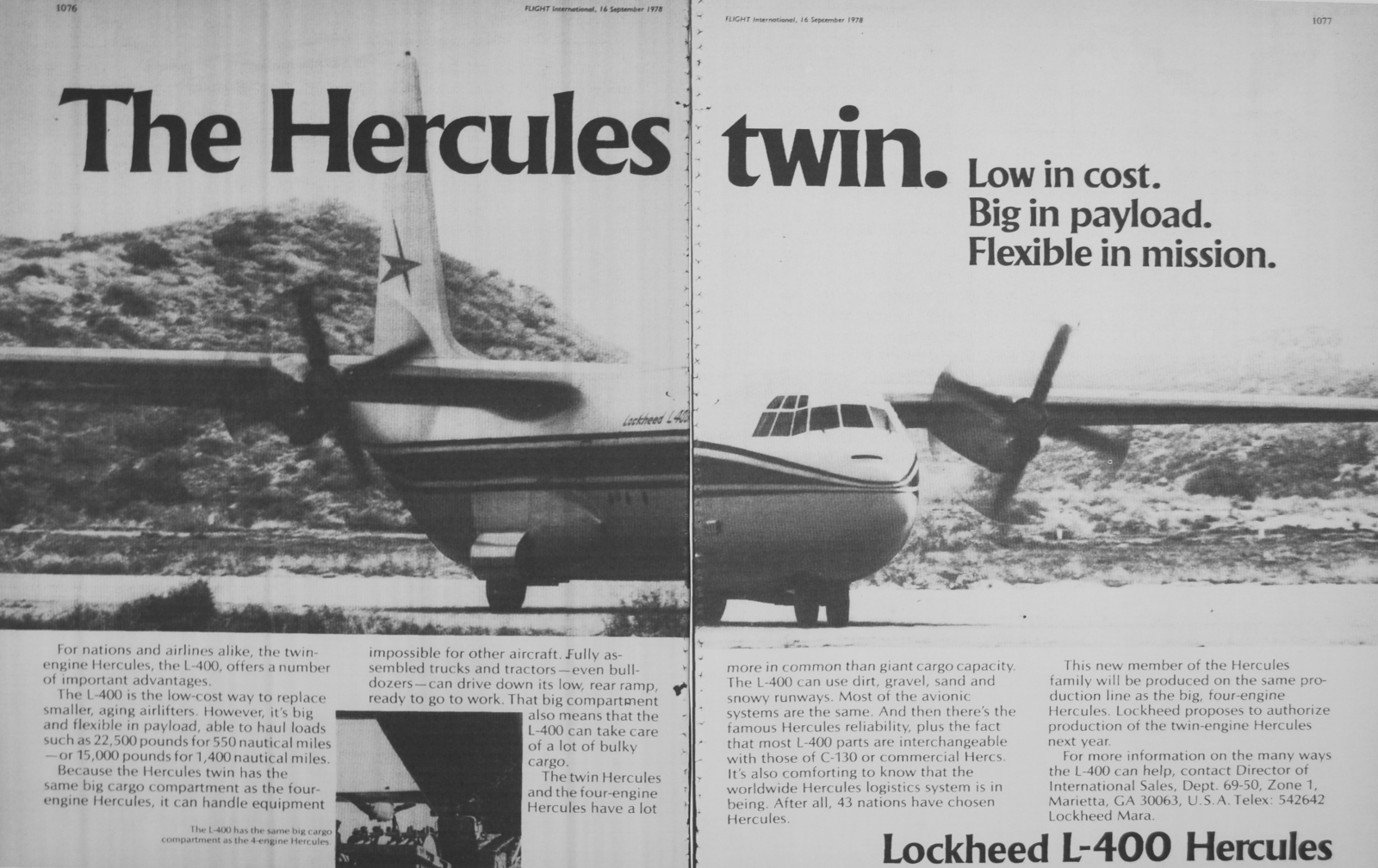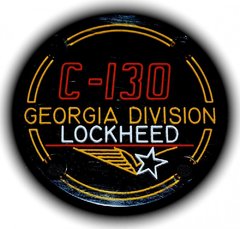twin-Hercules.jpg
The Hercules Twin.
Low in cost.
Big in payload. Flexible in mission.
For nations and airlines alike, the twin- engine Hercules, the L-400, offers a number of important advantages.
The L-400 is the low-cost way to replace smaller, aging airlifters. However, it's big and flexible in payload, able to haul loads such as 22,500 pounds for 550 nautical miles —or 15,000 pounds for 1,400 nautical miles.
Because the Hercules twin has the same big cargo compartment as the four- engine Hercules, it can handle equipment impossible for other aircraft, fully assembled trucks and tractors—even bull- dozers—can drive down its low, rear ramp, ready to go to work. That big compartment also means that the L-400 can take care of a lot of bulky cargo. The twin Hercules and the four-engine Hercules have a lot more in common than giant cargo capacity. The L-400 can use dirt, gravel, sand and snowy runways. Most of the avionic systems are the same. And then there's the famous Hercules reliability, plus the fact that most L-400 parts are interchangeable with those of C-130 or commercial Hercs. It's also comforting to know that the worldwide Hercules logistics system is in being. After all, 43 nations have chosen Hercules.
This new member of the Hercules family will be produced on the same production line as the big, four-engine Hercules. Lockheed proposes to authorize production of the twin-engine Hercules next year.
For more information on the many ways the L-400 can help, contact Director of International Sales, Dept. 69-50, Zone 1 Marietta, GA 30063, U.S.A.Telex: 542642 Lockheed Mara.
Lockheed L-400 Hercules
The L-400 has the same big cargo compartment as the 4-engine Hercules. 1978
Background: The Lockheed L-400 was designed to serve the needs of a large number of Hercules operators for an economical airlifter for shorter range, lower payload missions. Studies began in the late 1970s. Several options—including a new aircraft—were considered, but a twin-engine derivative of the Hercules was seen as the most logical. The L-400, which would have been built on the C-130 assembly line in Marietta, Georgia, was expected to offer more than ninety percent spares, facilities, mission equipment, and support services commonality with the C-130. The program was officially launched in January 1980 with first flight expected by 1982 and, after FAA certification, delivery to the first customer by 1983. However, the market never developed and the program was shelved by the mid-1980s.
http://www.codeonemagazine.com/gallery_slideshow.html?item_id=4614



Recommended Comments
There are no comments to display.
Join the conversation
You can post now and register later. If you have an account, sign in now to post with your account.